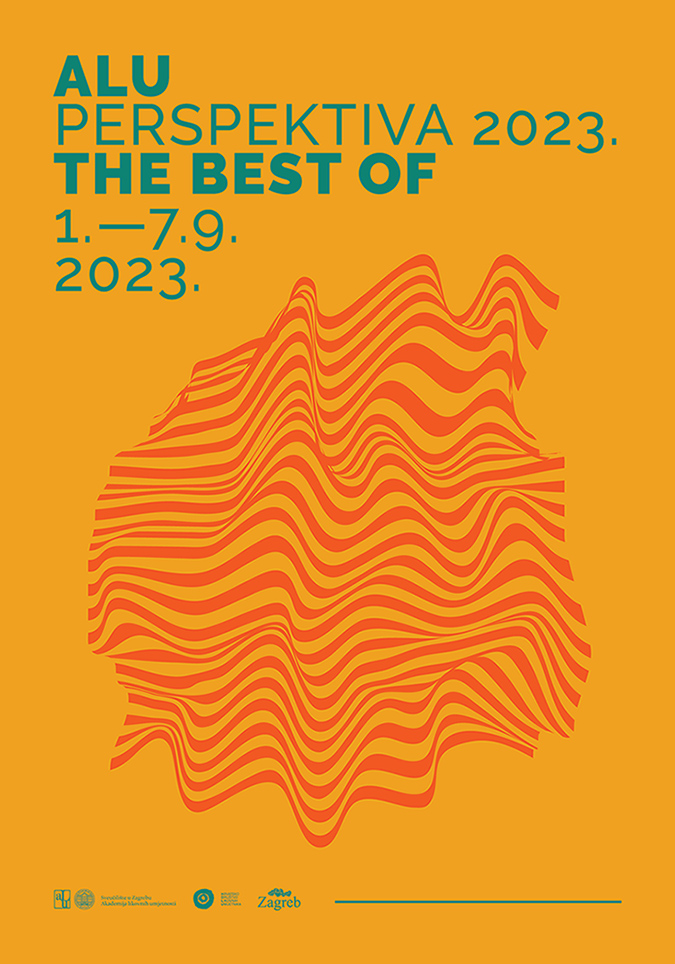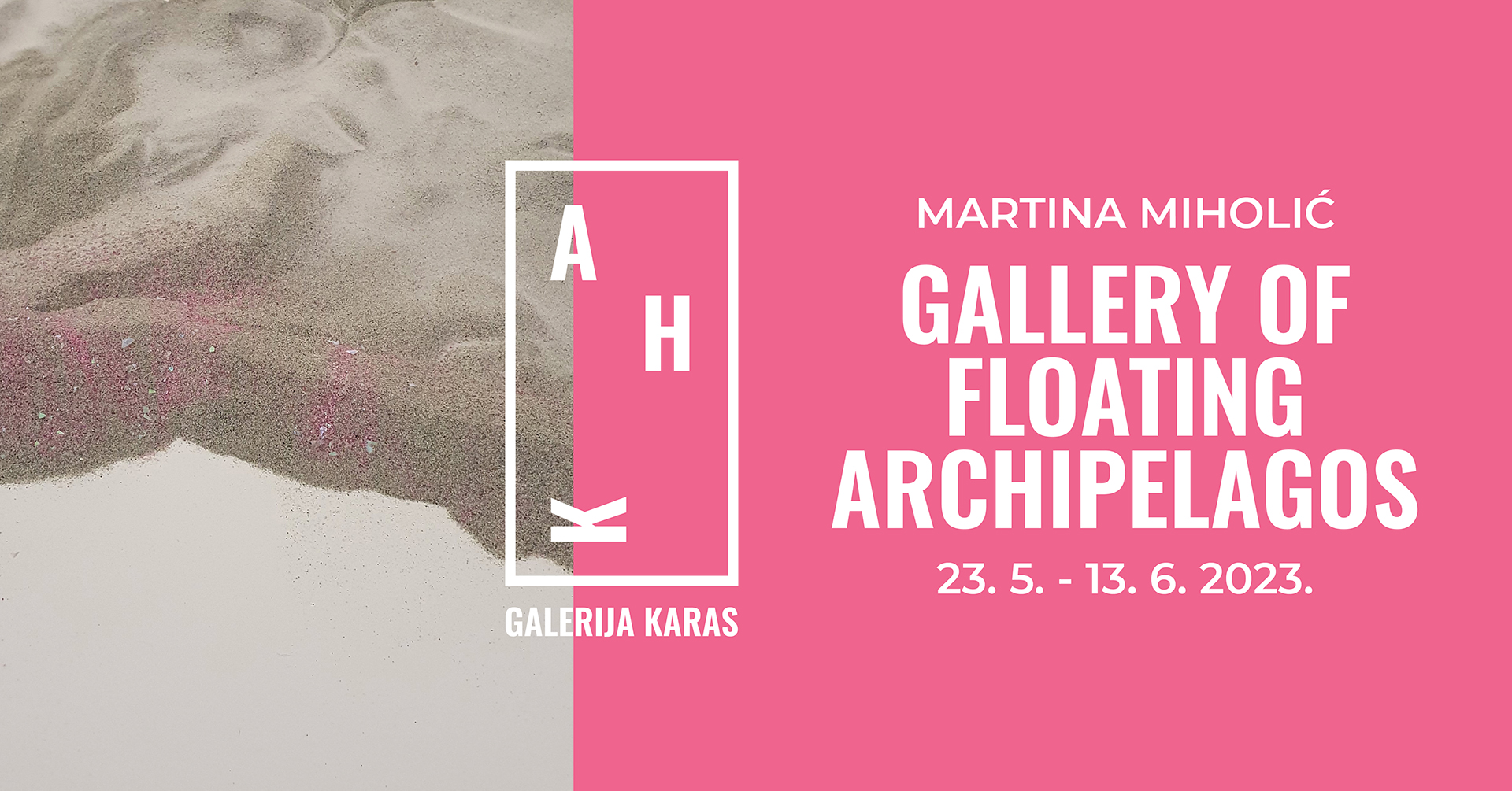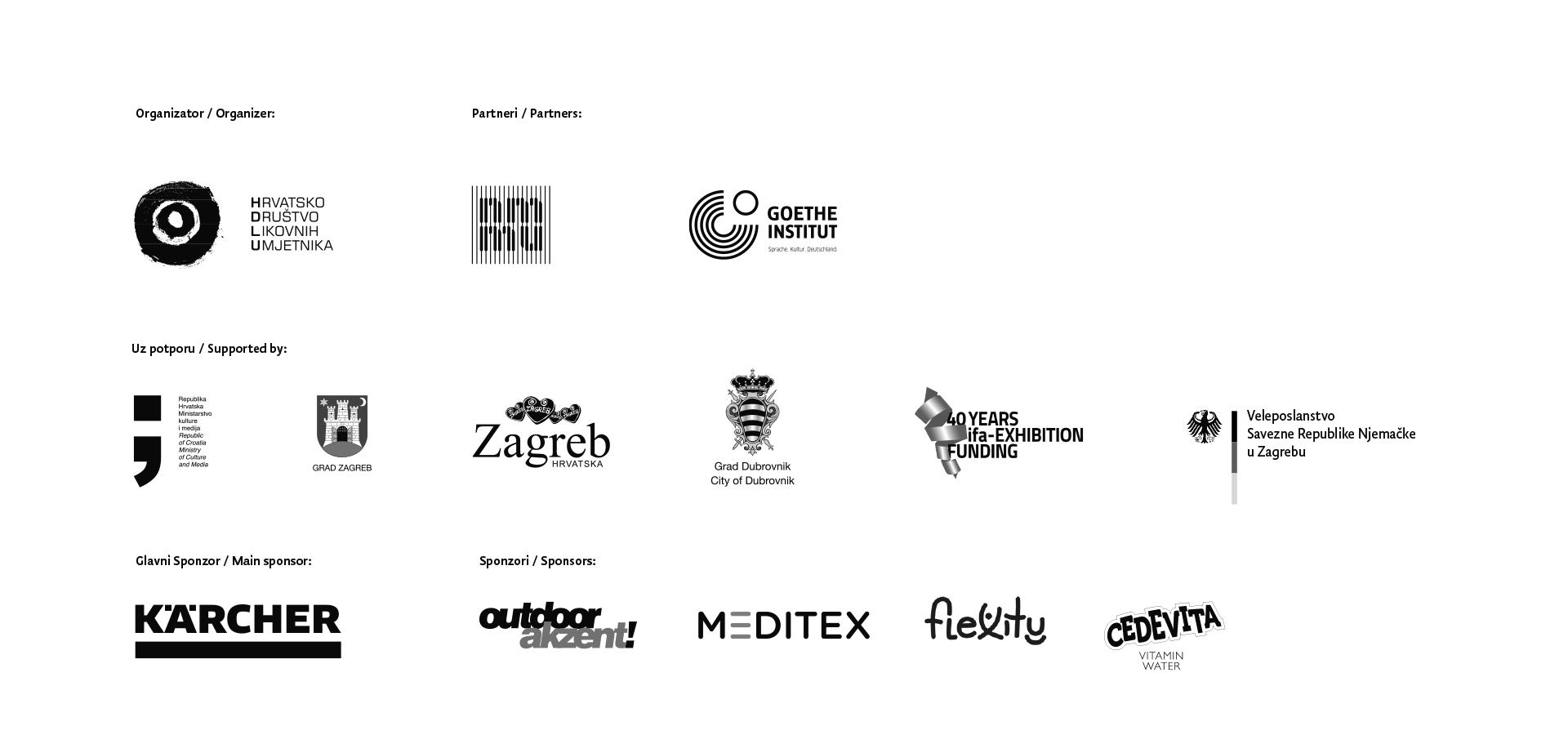Category: Exhibitions
LUCIJA BOGUNOVIĆ
TODAY THE SKY IS BLUE
6.-27.2.2024.
On Tuesday, 6.2.2024. Lucija Bogunović opens her solo exhibition entitled Today the sky is blue, at 7 pm in Karas Gallery (Ulica kralja Zvonimira 58).

In her foreword, Iva Jurić emphasizes:
“The photographs show the sky that Bogunović photographed from April 4th to June 4th, 2022 on locations where she would find herself once a day, with an hour difference from the previous day (April 4th at 12:00, April 5th at 13:00 etc.). Fascinated by the impermanence of the sky, she approaches the photography process ritually (turning on the alarm, waking up, constantly carrying the camera, becoming aware of a certain moment in the day, etc.), and by constantly recording it, she tries to create a relationship between herself as an ephemeral subject and it (the sky) as a constant. As an observer, she takes control of time for a short time and inscribes it in a way, i.e. marks it and later transfers it to the fabric.”
Biography:
Lucija Bogunović (1998) has been studying New Media at the Academy of Fine Arts at the University of Zagreb since 2019. As an artist she collaborated with Mostar Street Art Festival, Događanja Gallery, Žuta kuća in Istria, and in 2022 she was selected by Organ Vida to participate on a residency organized by photography platform Futures. In 2023, she participated in the project „I Saw Our Leaders. Reinterpreting Hungarian Poems Via Contemporary Art Practices“ and her work was published on the official website of the European Alliance of Academies.
In her artistic practice she explores the conceptual relation between photographic medium and time in depicting fragments of life and repetitive events, as well as the personal relationship between the meaning of home and a roof over the head through different media and perspectives.
The exhibition will be open during the period from 6. to 27.2.2024.
___
The Karas Art Hub platform was designed for the purpose of developing different approaches to the presentation, experience and processing of works of art displayed to the public in Zagreb’s Karas Gallery, which are presented to the public with digital content on the gallery’s web platform, including 360° shots of installations and video miniatures.
Organizer: HDLU
With the support of: Ministry of Culture and Media of the Republic of Croatia, City of Zagreb
WORLDS WITHIN WORLDS
Sophie Erlund, Igor Eškinja, Stephen Kent, Josep Maynou, Mark Požlep
September 14 – October 8, 2023
Prsten Gallery
Curator: Jelena Tamindžija Donnart

The international group exhibition “Worlds Within Worlds” curated by Jelena Tamindžija Donnart will open in Prsten Gallery, Croatian Association of Fine Artists on Thursday, September 14 at 7 pm.
The international exhibition “Worlds within worlds” brings together five artists Sophie Erlund (Denmark), Stephen Kent (USA), Josep Maynou (Spain), Igor Eškinja (Croatia) and Mark Požlep (Slovenia), was originally presented in February, 2023 at the Contemporary Art Center CCA Andratx in Mallorca, and then in April, 2023 at the Museum of Modern Art Dubrovnik. The exhibition was realized after a one-month artist-in-residence programme organized by the Contemporary Art Center CCA Andratx in Mallorca, founded by the famous Danish-French art collector couple Jacob and Patricia Asbæk. The organizers of the exhibition are Croatian Association of Fine Artists, CCA Andratx, Platform Nomad, Museum of Modern Art Dubrovnik, and the project is supported by the City of Zagreb, City of Dubrovnik, the Ministry of Culture and Media of the Republic of Croatia, Danish Arts Foundation (Statens Kunstfond), the Goethe Institute, Hilton Imperial Dubrovnik.
The gathered group of artists, taking a break from everyday life, questions their artistic practice during the artist-in-residence programme where they delve deeper into new and already raised questions in their work: from the question of image creation and the phenomenon of hyperproduction of the visual in today’s era in the paintings of various techniques by the author Stephen Kent; recording moments in the process of the creation of visual diaries by Josep Maynou, where the artist uses everyday objects; questioning our own perception of the space that surrounds us and in which we live in the work of Igor Eškinja; the relationship between object and man and questioning his anthropocentric view in the sculpture, drawings and sound work of Sophie Erlund; and questions of the creation of life situations in which we will bring ourselves to a new dimension of perception of reality in the video work and drawings of Mark Požlep.
The gathered group of artists were participants in the artist-in-residence programme named “Artist meets Chef” in 2017 and 2019 at the Adriatic Hotel in Rovinj, led by Vanja Žanko and Jelena Tamindžija Donnart from the Nomad Platform.

Opening: Prsten Gallery (Home of HDLU), Friday, September 1, 2023 at 8pm
The ALU Perspective is a project conceived as an additional format and expansion of the Final Exhibition at the ALU Zagreb. It is held at the Academy of Fine Arts of the University of Zagreb every year in the context of celebrating the Academy Day (June 8), with the desire to reminiscence the day of the founding of the first art academy in Croatia back in 1907, but also to present the final artworks of students of all 6 departments of the Academy and, in all years of undergraduate and graduate studies.
The goal of the September edition of the project entitled ALU Perspective 2023/The best of is to present the best student works from the production of works created during the academic year 2022/2023, while raising awareness of the importance of artistic creativity and the presence of works in different forms and approaches to artistic creativity.
With regard to the relocation and renovation of ALU Zagreb, which we hope will contribute to the creation of a new format of higher art education in the Republic of Croatia, we believe that maintaining and presenting a project such as ALU Perspective creates a good accumulation of energy for strengthening artistic creativity, encouraging top production and changing society through artistic creativity.
The future development of the project and its subsequent editions will thus open up a new space for constant creative change in all generations of artists with encouragement and special promotion of the emerging generation.
The working hours of the exhibition at HDLU:
Tuesday-Sunday: 11am – 7pm
Mondays and holidays closed
MARTINA MIHOLIĆ
GALLERY OF FLOATING ARCHIPELAGOS
Karas Gallery
23.5.-13.6.2023.
On Tuesday, 23.5.2023. Martina Miholić opens her solo exhibition entitled Gallery of Floating Archipelagos, at 7 pm in Karas Gallery (Ulica kralja Zvonimira 58).

In her foreword, Barbara Vujanović emphasizes:
One of the narrative backbones of the series of works, which, however, is not literally staged in the exhibitions, is Hans Christian Andersen’s famous fairy tale “The Little Mermaid“. The story of a tragic character who sacrifices her greatest virtue, her voice, and then her body, and even her existence, is an ideal reference to the contemporary imperative of constant adaptation of female appearance to the imposed canons of beauty. The body changed by cosmetics, surgery and exercise continues its further transformation in the digital and viral reality, which perpetuates further imperatives of artificial and unnecessary ideals.
Biography:
Martina Miholić graduated from the Graphic Arts Department of the Academy of Fine Arts in Zagreb in 2004, and in 2011 she received her master’s degree from Central Saint Martins College in London. In 2006, she became the artistic director of the International Festival of Student Theatre and Multimedia – Test! which she managed until 2010. From 2010 until 2012, as part of the ULAZ association and in collaboration with the Embassy of the Republic of Croatia in London, she implemented the project „Export – Import”. In 2016, together with Mia Orsag, she was the curator of the 33rd Youth Salon. She has produced numerous cultural events, such as the Youth Salon, Biennale of Painting, and others. Since 2021, she has been a member of the Cultural Council of Innovative Cultural Practices at the Ministry of Culture.
She has participated in numerous solo and group exhibitions, as well as film festivals in the country and abroad. She has attended several residency programmes and is the recipient of an award at the 14th Triennial of Croatian Sculpture.
The exhibition will be open during the period from 23.5. to 13.6.2023.
___
The Karas Art Hub platform was designed for the purpose of developing different approaches to the presentation, experience and processing of works of art displayed to the public in Zagreb’s Karas Gallery, which are presented to the public with digital content on the gallery’s web platform, including 360° shots of installations and video miniatures.
Organizer: HDLU
With the support of: Ministry of Culture and Media of the Republic of Croatia, City of Zagreb










